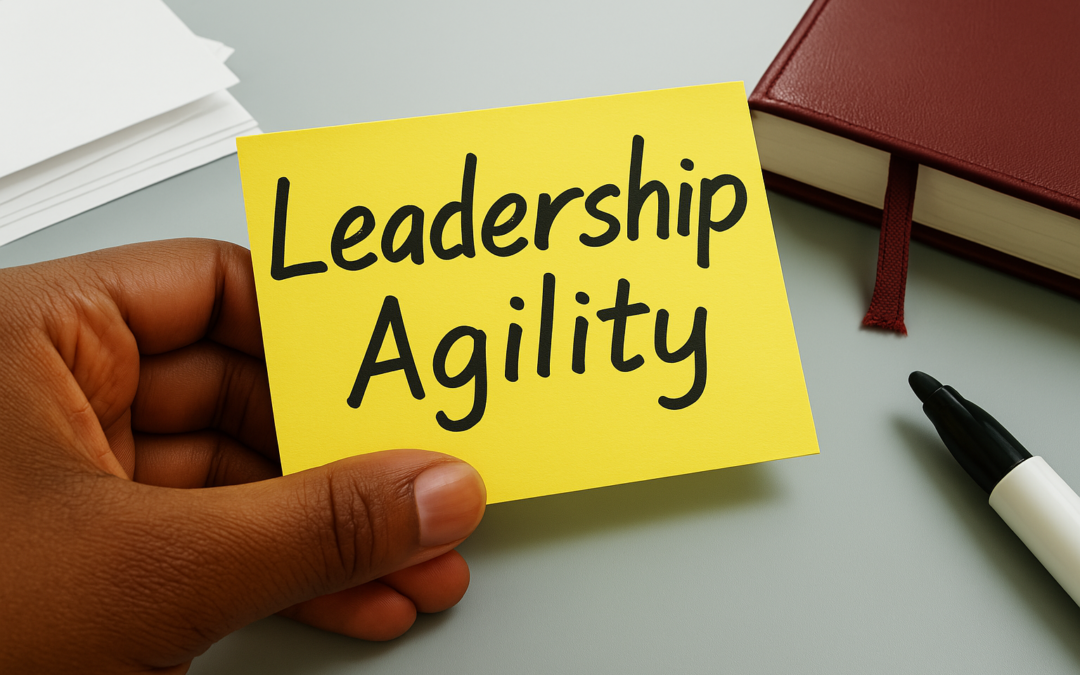
by Atiya Sheikh | May 25, 2025 | Board Members, Board Trustees, CEO, CFO, COO, CIO, General Managers, Heads of Divisions, Leadership Development
Resilience Starts at the Top: How Leaders Can Equip Their Businesses for Disruption
In an age of constant flux, where global shocks and rapid change have become the norm, the role of a CEO has evolved. Today’s leaders must move beyond traditional responsibilities and embrace a more dynamic title: Chief Resilience Officer.
Recent research from McKinsey & Company raises a pressing concern—84% of business leaders say they feel ill-equipped to handle future disruptions, and 60% of board members believe their organisations lack the preparation to face the next major crisis. Yet, amid this uncertainty, leaders can adopt clear, actionable strategies to build resilience and position their organisations for sustainable growth.
Understanding the Five Dimensions of Resilience
To lead effectively through disruption, CEOs must recognise that resilience spans multiple dimensions. McKinsey outlines four key areas:
-
Financial Resilience – The flexibility, liquidity, and access to capital organisations need to weather setbacks and seize opportunities.
-
Operational Resilience – The agility to pivot business practices swiftly and at scale.
-
Organisational Resilience – The cultural and structural strength that enables teams to adapt and recover from setbacks.
-
External Resilience – The strength of stakeholder relationships—including clients, regulators, and investors—that stabilise and support the business.
At inemmo, we believe organisations must also prioritise a fifth dimension:
-
Digital Resilience – The ability to adapt, protect, and thrive in an increasingly digital world. This includes countering cyber threats, embracing emerging technologies, sustaining operations through digital platforms, and enhancing digital capabilities across all levels of staff.
In our global leadership work, we regularly observe how digital fragility can undermine even the most robust strategies. Digital resilience is no longer just part of operational readiness—it has become a strategic imperative.
Embedding Resilience into Organisational Vision
High-performing companies often outperform their peers because their leadership teams align under a shared, resilient vision. CEOs must set this ‘North Star’—a guiding purpose that remains steady in turbulent times.
However, many organisations fail to communicate their vision consistently during uncertainty. CEOs must take the lead in recalibrating their messaging, ensuring it connects long-term ambition with short-term responsiveness. A resilient vision inspires confidence and unifies teams navigating ambiguity.
Linking Resilience Directly to Growth
Resilient businesses don’t wait for disruption to expose weaknesses—they plan ahead. McKinsey reports that 72% of high-performing CEOs set growth targets that exceed the market average. These leaders recognise that resilience acts not only as a shield but as a catalyst for progress and innovation.
Practical actions include scenario planning, stress testing, and using periods of calm to build future capabilities. When leaders treat resilience as a growth engine, they position their organisations to seize opportunities amid uncertainty.
Investing in People and ‘Full-Body’ Resilience
Organisational strength relies on more than systems—it depends on people. CEOs must build what McKinsey describes as “full-body resilience” by addressing all five dimensions in an integrated way. Strength in one area should support others when pressure builds.
This requires investment in the adaptability and well-being of individuals across the business. Leaders should prioritise hiring and developing people who remain agile, responsive, and solution-focused—even under pressure.
Strengthening Stakeholder Relationships
In a complex, interconnected world, CEOs must show up as visible, vocal, and values-led leaders. While many executives believe in corporate responsibility, few feel that organisations take meaningful action.
Effective leaders build external resilience by cultivating strong relationships with a wide range of stakeholders—suppliers, clients, policymakers, investors, and media. These relationships grow through authenticity, consistent communication, and the courage to lead conversations on critical issues.
Final Thought
At inemmo, we believe resilient leadership goes beyond managing risk—it requires a mindset shift. In moments of upheaval, CEOs who embrace this expanded role, align their people, adapt their strategies, and build external trust will guide their organisations toward long-term value and impact.
Is your leadership team ready to become resilience architects?
The Right Conversation Can Change Everything. Let’s Talk.

by Atiya Sheikh | Mar 30, 2025 | CEO, CFO, COO, CIO, News & Articles
What a 19th-century war game reveals about strategic thinking, adaptability, and decision-making for today’s senior business leaders.
In 1824, a young Prince Wilhelm of Prussia witnessed a military simulation that would go on to change the fortunes of his army—and perhaps the shape of Europe. Kriegsspiel, a war game designed with maps, wooden battalions, and probability tables, was more than a pastime. It became an engine of innovation. Under Wilhelm’s reign, this simulation helped shape military tactics that brought unexpected success in the Franco-Prussian War. Its continued evolution laid the groundwork for predictive logistics, strategic modelling, and ultimately the birth of modern game theory.
For today’s senior leaders, the lesson is clear: when complexity reigns, the ability to model reality—rather than simply react to it—becomes a defining advantage.
Simulating Complexity
The genius of Kriegsspiel was its ability to condense an overwhelming battlefield into a controlled, analytical environment. Its relevance today lies in its approach to complexity. Senior leaders navigating volatile markets, geopolitical shocks, and AI disruption face similarly intricate challenges. The temptation is to act decisively and instinctively—but modelling, simulation, and structured experimentation are far more effective tools.
The most forward-thinking organisations are already building internal “war rooms” that operate in much the same way. They use scenario planning not simply to forecast risk, but to rehearse resilience. Supply chain breakdowns, cyber threats, and consumer shifts are gamed out with cross-functional teams, enabling adaptive strategies long before crisis strikes.
The Leadership Mindset Shift
But the power of simulation lies not in the models alone—it lies in the mindset it cultivates. Prince Wilhelm didn’t simply mandate the use of Kriegsspiel for entertainment. He institutionalised it as a learning tool, embedding it into the professional development of every officer. In doing so, he transformed a military culture from rigid tradition to experimental agility.
Modern business leadership demands a similar shift. Organisations that treat uncertainty as a problem to eliminate will remain brittle. Those that treat it as a landscape to explore—one where tactics can be tested, recalibrated, and refined—will be better placed to navigate transformation with confidence.
This requires humility as much as ambition. Leaders must be willing to ask: What don’t we know? Where might we be wrong? Which assumptions should we challenge? These questions are uncomfortable, but they’re also the entry point to deeper strategic insight.
Models Are Not the Territory
Still, simulation has its limits. Just as Kriegsspiel compressed the battlefield into a tidy map, modern tools—from spreadsheets to digital twins—are simplifications of reality. Kelly Clancy, in her wide-ranging study of how games shape perception, warns that the map can begin to distort the territory. Overreliance on models can lead leaders to prioritise what is measurable over what is meaningful.
The same caution applies to the way game theory and behavioural economics have entered boardroom thinking. When human behaviour is treated as a matter of incentives alone—as though employees, customers or partners are pure rational actors—organisational strategy risks becoming divorced from lived experience.
The best leaders recognise the utility of these models without being seduced by their elegance. They combine data with judgement, logic with empathy. They understand that metrics are tools, not truths.
Designing for Adaptability
In today’s digital environment, game-like mechanisms are everywhere. Reputation systems, social scoring, and algorithmic feedback loops all shape how value is perceived and decisions are made. Businesses too often absorb these mechanisms passively—optimising for clicks, engagement, or customer “loyalty”—without stepping back to ask whether the game they are playing is the one they ought to win.
Leadership today must be more deliberate in shaping the rules of engagement. This means designing organisations not just for efficiency, but for adaptability. It means rewarding learning, not just output. And it means recognising that agility is not the same as chaos—just as improvisation in jazz is rooted in deep discipline.
What a 19th-century war game can teach us about 21st-century leadership
What can a 19th-century war game teach us about 21st-century leadership? More than we might expect. In an age where strategy must be as fluid as the challenges it seeks to overcome, simulation becomes more than a technique—it becomes a habit of mind.
To lead effectively today is to engage with complexity on its own terms. Not to flatten it, ignore it, or hope it goes away. But to step inside it, play it out, and emerge with clearer thinking and sharper intent.
The Right Conversation Can Change Everything. Let’s Talk.

by Joy Maitland | Mar 30, 2025 | CEO, CFO, COO, CIO, News & Articles
Self-aware Leadership Development
Leadership, as someone once wrote, is “one of the most observed and least understood phenomena on earth.” That line has stood the test of time—and for good reason. For all our progress, self-aware leadership development remains a complex challenge. We often recognise great leadership when we see it, but struggle to define it or replicate it with certainty.
In business, discussions around leadership usually orbit three familiar themes:
- How leaders think, act, and influence
- How people respond to leadership and engage with it
- The systems and environments in which leadership takes shape
Of these, it’s the leader themselves who still attracts the most attention. We’re fascinated by personality, presence, and the seemingly unteachable “it” factor. The old debate lingers: are great leaders born, or can they be developed?
Figures like Field Marshal Montgomery believed leaders needed “infectious optimism” and visible resolve, even in moments of doubt. Henri Fayol saw leadership as careful planning and execution. David Ogilvy celebrated the complicated character—someone confident, never petty, and not shaken by defeat. These views, though dated, still echo in how we think about leadership today.
But let’s be honest: leadership in the modern world looks very different.
The Shift: From the Heroic to the Human
In today’s organisations, leadership isn’t about being the loudest or most dominant voice in the room. It’s about presence, perspective, and adaptability. Leadership is no longer a role reserved for the chosen few—it’s a practice that can be shaped, refined, and strengthened over time.
This is exactly the thinking behind Lumina Leader, a powerful psychometric tool created by Dr Stewart Desson, a business psychologist and founder of Lumina Learning. Unlike older models that place people into rigid categories, Lumina Leader embraces complexity. It explores how personality influences leadership behaviour—and how those behaviours shift in everyday settings, under pressure, and at our best.
At inemmo, we use Lumina Leader to help leaders discover their natural style, their leadership strengths, and where they may overextend, especially under stress. It supports self-awareness in a structured, evidence-based way—making the invisible aspects of leadership visible and actionable.
Structure Still Matters
Of course, leadership isn’t only about personality. Some of the most effective leaders in history—like Alfred P. Sloan at General Motors—succeeded because they understood systems. They built solid structures and equipped others to thrive within them. In contrast, individuals with star power but little strategic depth often struggle to sustain success.
The best leaders today combine both: an understanding of themselves and the ability to shape systems around them. They know when to step forward, when to step back, and how to align people around shared goals.
Leadership vs. Management: A False Divide?
Abraham Zaleznik, writing in Harvard Business Review, famously argued that leaders and managers are fundamentally different creatures. Managers seek stability. Leaders seek movement. But in today’s world, that binary feels dated. The most effective leaders draw from both disciplines—balancing strategic clarity with empathy, structure with creativity.
Warren Bennis, one of the great thinkers on leadership, found that successful leaders consistently pay attention to what matters, define direction, and bring people along with them. It’s less about certainty and more about alignment.
So, What Now?
Leadership is evolving. It’s becoming more inclusive, more psychologically aware, and more context-driven. Tools like Lumina Leader are part of this evolution—helping leaders move beyond vague ideals and towards real understanding.
In practice, this means:
- Knowing your natural strengths and how others perceive them
- Recognising how you behave under stress—and where it may trip you up
- Learning how to stretch your style to meet the needs of different situations and people
Above all, it means understanding that leadership isn’t a fixed trait or a job title. It’s a living, breathing process—something shaped by reflection, experience, and honest feedback.
So, the next time we talk about leadership, maybe we should look beyond the myths and focus on the mindset. The truth is, leadership isn’t about being perfect. It’s about being real, being aware, and being ready to grow.
The Right Conversation Can Change Everything. Let’s Talk.

by Joy Maitland | Mar 1, 2025 | Board Members, Board Trustees, CEO, CFO, COO, CIO, Heads of Divisions, Managing Directors, News & Articles, Non-Executive Board Members, Senior Managers
Bold ideas and visionary leaders may capture headlines, but real organisational transformation emerges from the intricate web of new and evolving relationships.
Embracing Complexity: A Smarter Approach to Business Transformation
Transformation is often framed as a bold vision driven by senior leadership, executed through structured plans. Yet in today’s volatile business environment, this approach falls short. Real change does not come from rigid strategies but from the interplay of relationships, systems, and emerging opportunities. Leaders who embrace complexity rather than resist it will unlock new levels of agility, adaptability, and innovation.
The Flaw in Traditional Transformation Thinking
Many leaders assume transformation is best achieved through top-down control—a defined roadmap with clear milestones. While structure has its place, this approach underestimates the reality of complex organisations: change is non-linear, unpredictable, and shaped by countless interactions across teams, departments, and stakeholders.
Relying solely on executive directives often leads to missed opportunities and resistance. Employees on the front lines understand operational challenges and customer needs in ways that leadership alone cannot. When transformation efforts engage diverse perspectives and allow adaptive decision-making, organisations become more resilient and responsive.
Why Complexity is an Advantage
Businesses today operate in interconnected systems—supply chains, markets, and workforces that evolve continuously. Attempting to control every variable is futile. Instead, leaders should focus on enabling conditions where change can emerge organically.
A company that integrates feedback loops, cross-functional collaboration, and iterative learning creates agility at all levels. This allows teams to pivot when faced with unexpected challenges rather than being constrained by rigid plans. Complexity is not a barrier; it is a source of strength for organisations that build adaptability into their culture.
Leadership: From Control to Enabling Change
Effective leaders in complex environments shift from directing to empowering. Instead of imposing a fixed agenda, they:
- Set a clear vision, but allow flexibility in execution
- Encourage open collaboration across functions to surface innovative solutions
- Support a culture of learning, where feedback informs strategy
- Break down silos, ensuring that transformation is a shared responsibility
This leadership approach does not mean stepping back—it means creating the right conditions for transformation to thrive.
Building Agility Into Strategy
Rigid, one-size-fits-all strategies no longer work in dynamic environments. Instead, organisations should:
- Treat plans as adaptable frameworks, not static roadmaps
- Test and iterate—small-scale pilots can uncover unexpected insights
- Balance structure with flexibility, allowing teams to adjust based on real-time challenges
Business transformation is not a single event—it is a continuous process shaped by relationships, learning, and adaptability. Leaders who recognise the power of complexity will build organisations that not only survive change but thrive because of it. The challenge is not to eliminate complexity but to harness it.
Is your organisation structured for control—or for adaptability?
The Right Conversation Can Change Everything. Let’s Talk.




